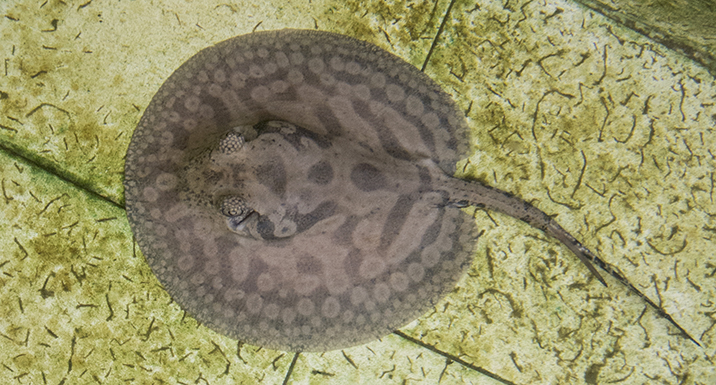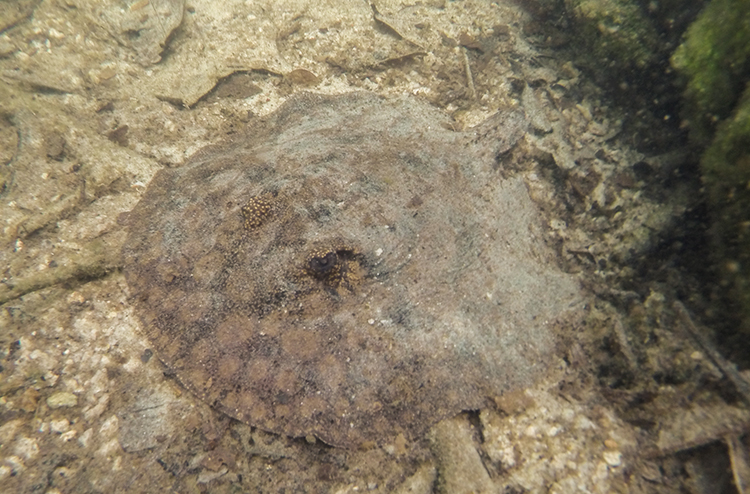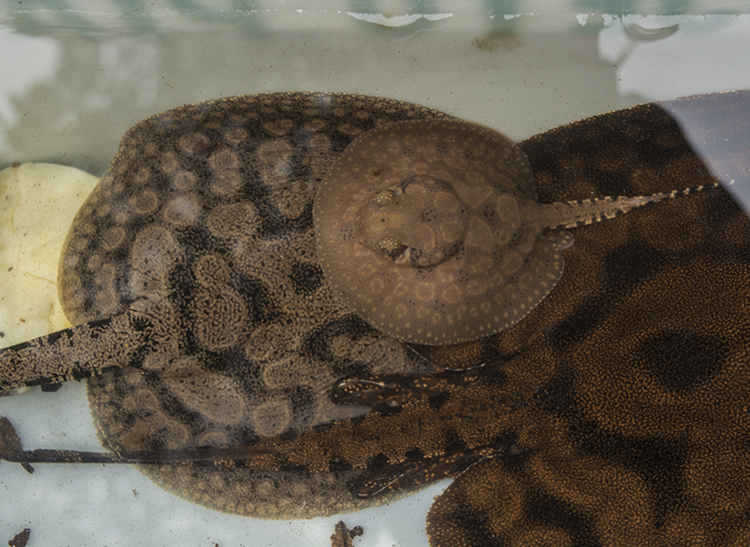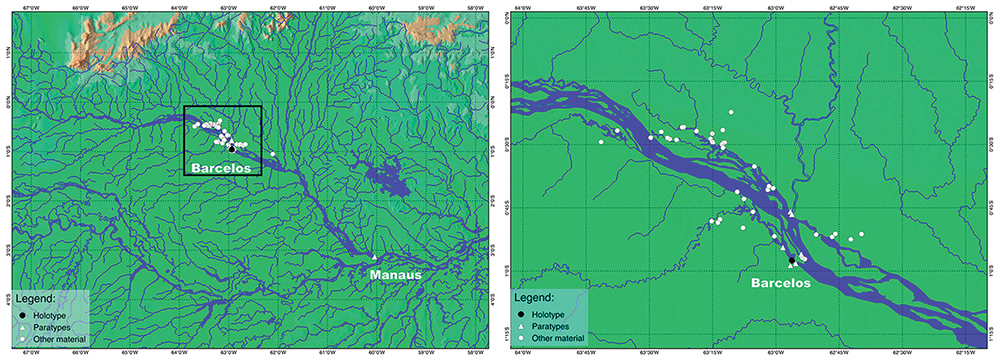The ‘Cururu’ or ‘Rio Negro Hystrix’ Ray, which has been known in the trade and hobby for some time, was recently described scientifically in a paper published in the journal Zootaxa this past month. Endemic to Brazil’s Rio Negro, the freshwater ray, was named Potamotrygon wallacei in honor of Alfred Russel Wallace, the famed British naturalist.
Wallace led the first major scientific exploration of the Rio Negro in the late 19th century, and his published account of the journey, A Narrative of Travels on the Amazon and Rio Negro (available free on Google Books), contains some of the first descriptions of the unique fish fauna of this blackwater tributary.
The species is distinguished by its unique pattern of curved, dark brown markings on the disc, relatively “tall” body, and the presence of dermal denticles (rough, spiky “scales”) along the back of the disc and tail.
Although still uncommon in the hobby, this ray has been exported in moderate numbers in recent years by way of Manaus, Brazil. It has often been confused with another similar ray, P. hystrix (the ‘true’ hystrix), which is only found in southern Brazil, Argentina, and possibly Paraguay along the Paraná-Paraguay River basin (P. hystrix is rarely, if ever, exported for the aquarium trade).
Adding to the confusion surrounding the name, a third species, P. orbignyi, is often exported from Colombia as ‘hystrix’ or ‘yellow hystrix’. Another common name for P. wallacei—‘cururu’—is derived from the local name for the ray, arraia cururu. Regardless, this new species is found only in the middle Rio Negro with populations restricted to the blackwater creeks and igarapes around the municipality of Barcelos, where it is fairly abundant.
With a maximum size of about 12″ (31cm) in diameter, P. wallacei is the smallest known freshwater ray, making it a desirable species for aquaria. Collecting these rays has become a significant source of income for some small fishing communities in the middle Negro, and it is currently protected under a quota system which limits the number of specimens which can be collected and exported each year.
Fortunately, this species matures earlier and has a much shorter gestation period than many other freshwater ray species, making P. wallacei fairly resilient. They tend to inhabit shallow, clear water areas where they remain partially buried beneath the sand, emerging at dusk to forage for food along the edges of the river or creek. The species, along with the other Rio Negro native rays, were profiled in the March/April 2016 issue of AMAZONAS.
Original open access paper:
Carvalho, M.R., Rosa, R. S., Araujo, M. L. (2016). A new species of Neotropical freshwater stingray (Chondrichthyes: Potamotrygonidae) from the Rio Negro, Amazonas, Brazil: the smallest species of Potamotrygon. Zootaxa 4107 (4) 566-585
http://www.biotaxa.org/Zootaxa/article/view/zootaxa.4107.4.5









